Image
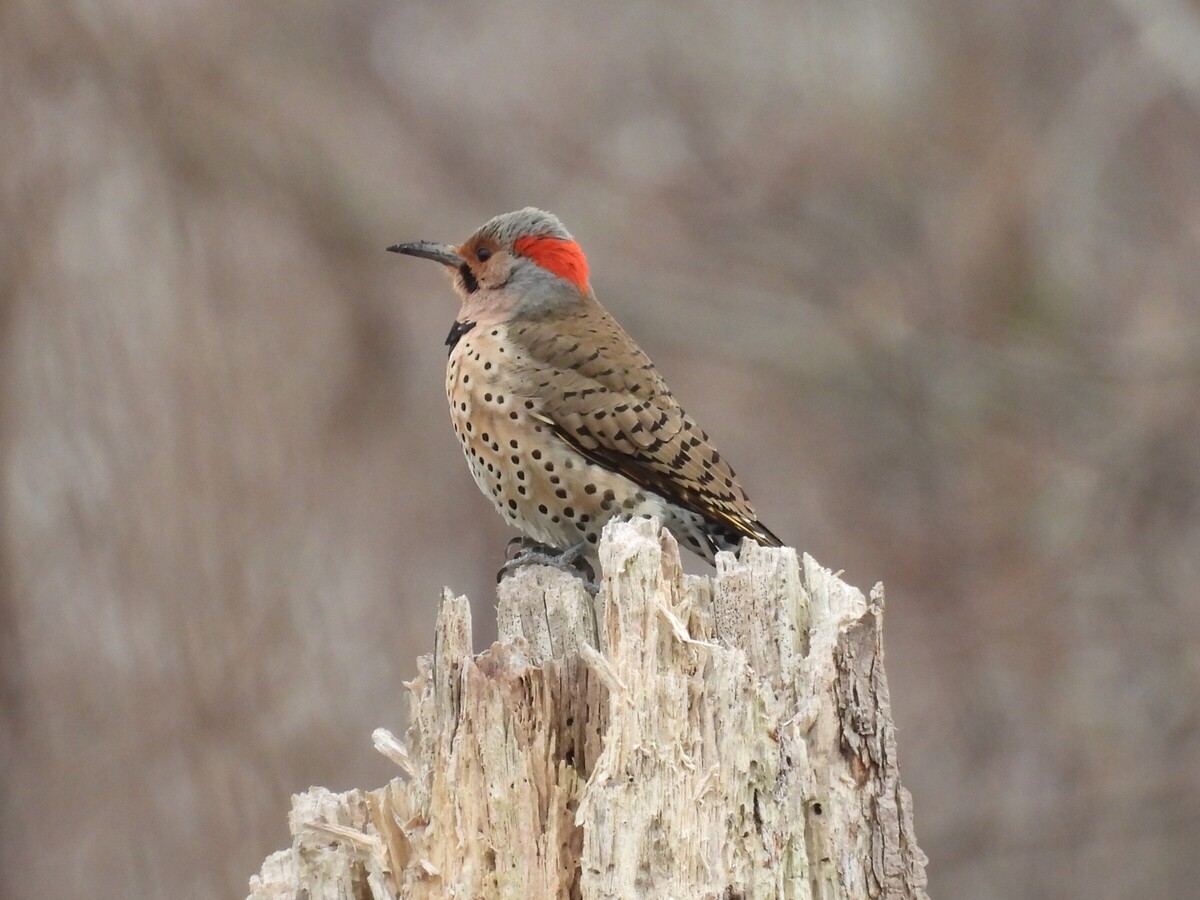
by Mike Strzelecki*
There are either seven or eight species of woodpeckers in Pennsylvania, according to what source you use. Most are residential species, meaning they live in the same area year-round. Others may migrate, although most of the migratory ones do not perform the long-distance migrations that warblers are noted for. They may just bop south a bit to follow the insect supply.
Of relevance to this article - in the Boyertown area, there are four species of woodpeckers that may routinely come to a backyard bird feeder. Being able to differentiate between them presents a fun challenge to the backyard birder. These images may help with the task.
The most common woodpeckers found at backyard feeders are the downy woodpeckers. They are tiny with black and white mottling, a white belly, and a white stripe down the back. Males have a red dot on the back of their heads. They are the smallest woodpecker, usually checking in at about 6 inches, or the size of a dollar bill. They possess short, stubby bills. They like seeds from the feeder, but based on my backyard experience, they really love suet. Here is a picture of a downy woodpecker to help with their identification.
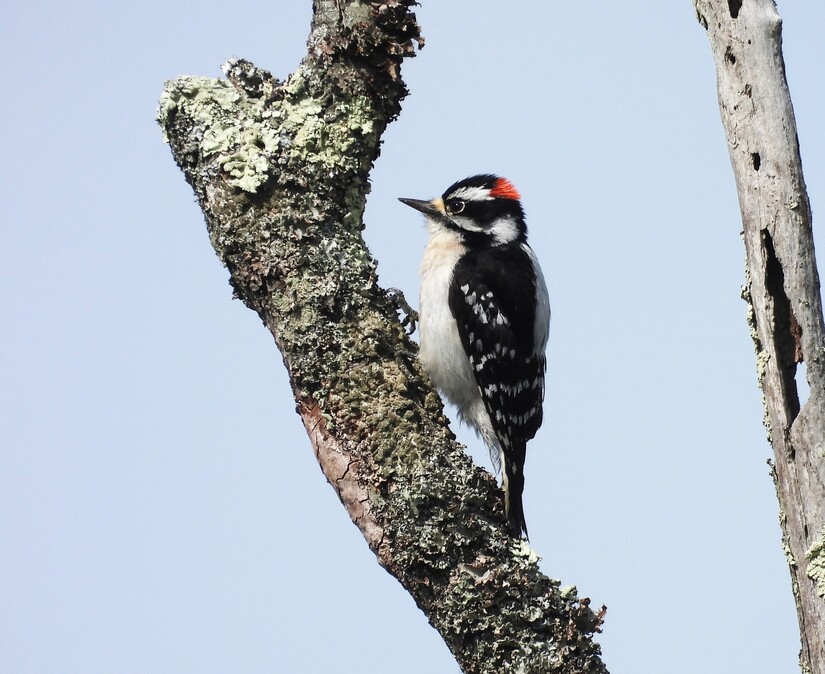
Here is where things become difficult. The hairy woodpecker also comes to backyard feeders, though they are not as common. They look an awful lot like a downy woodpecker, with very similar black mottling and a white belly. Males also possess a red splotch on the head. They are slightly larger than a downy woodpecker, but this is rarely a field mark to help in identification unless you see the two birds side-by-side.
Here is how you can tell if that woodpecker at your feeder is a downy or a hairy. Take a good look at the bill. On a hairy woodpecker, the bill is long and strong; it is generally the same length as the bird’s head (see photographs below). On the downy woodpecker, the bill is short and choppy, about half the length of the bird’s head. In the field, it’s tough to assess the size of a woodpecker’s bill when they are hopping around dead tree trunks or catching bugs high in the canopy. But at feeders, you get a rare close-up view of these woodpeckers and can better identify their field marks.
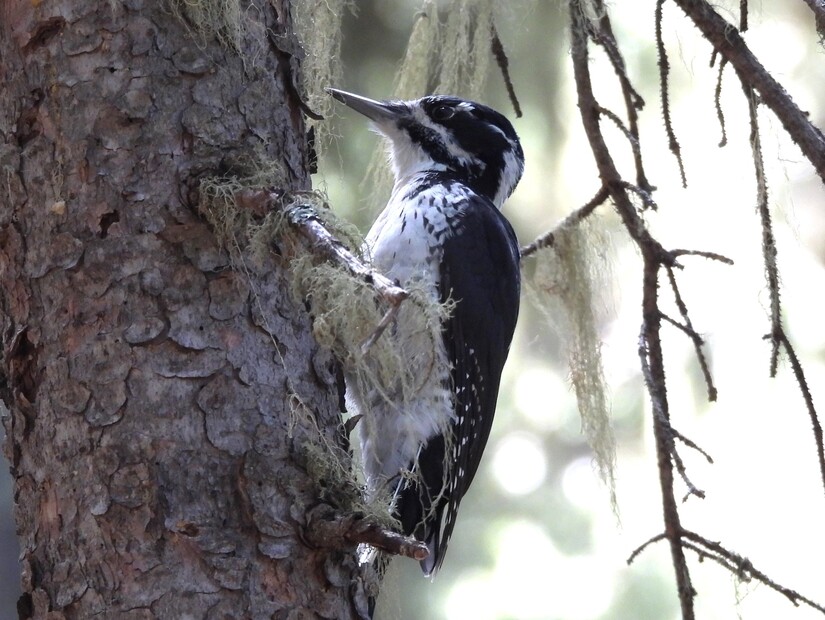
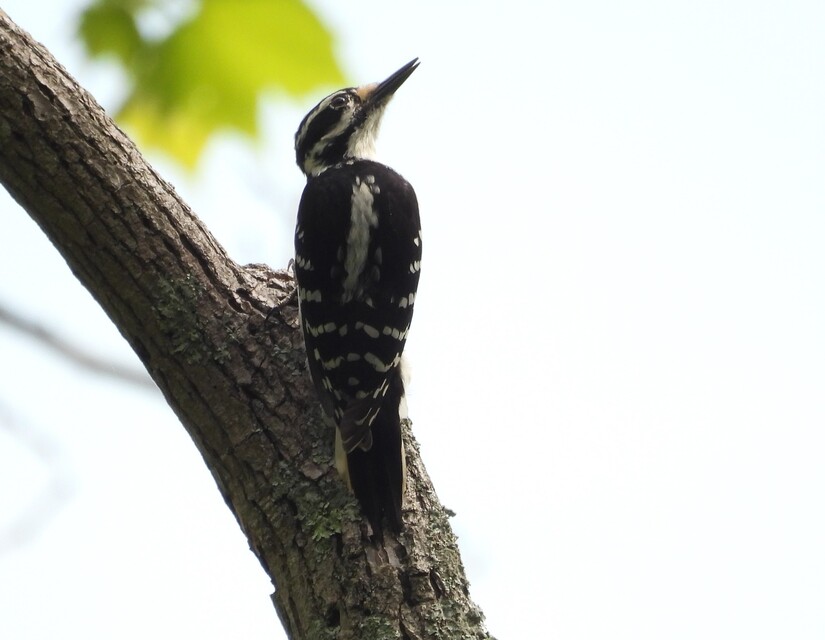
On a note of interest: Even though they are virtually identical birds, the downy and hairy woodpeckers are not closely related in a genetic manner. They fall far apart from each other on the family tree. Scientists found, however, that they evolved to appear similar in physical appearance due to a process known as convergent evolution.
A third woodpecker that visits backyard feeders in the Boyertown area is the red-bellied woodpecker. Birders tip on this species: look for a bright red head on the bird, and not a red belly, as the name implies. While they possess red bellies, the red is extremely muted and usually hidden by feathers.
The red-bellied woodpecker pops more than the other downy and hair woodpeckers. They have a black-and-white zebra-patterned back, white belly, and large red marking on the head area. The male has a larger red area, covering the nape, crown, and forehead. The female has a smaller red marking, usually just around the nape. What makes them pop is the shade of red, which in sunlight, sometimes leans toward a fluorescent cherry color. Red-bellied woodpeckers are very common in parks and woodland and are easily identifiable by their catchy call, a series of monotonic, deep “churrs.”
https://www.allaboutbirds.org/guide/Red-bellied_Woodpecker/sounds
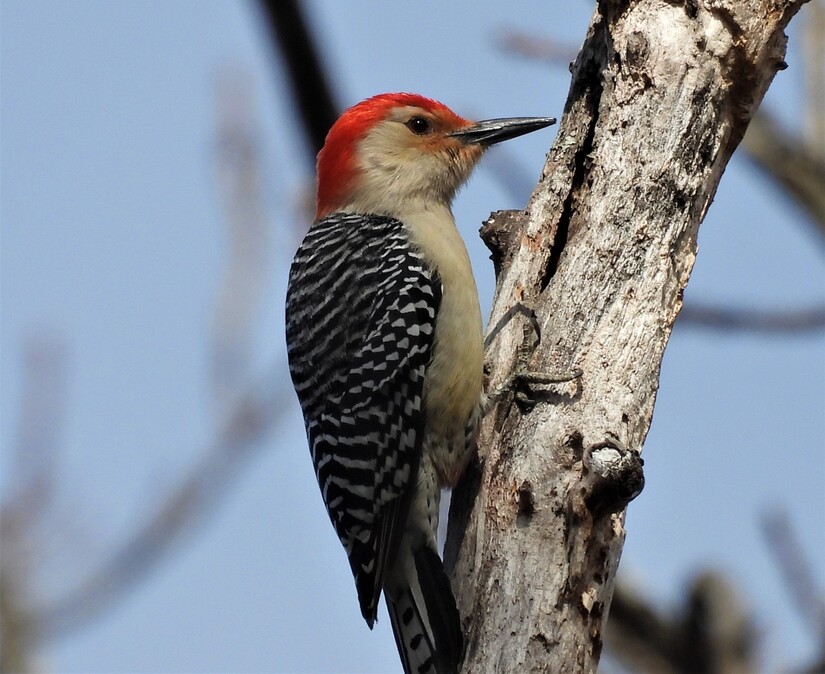
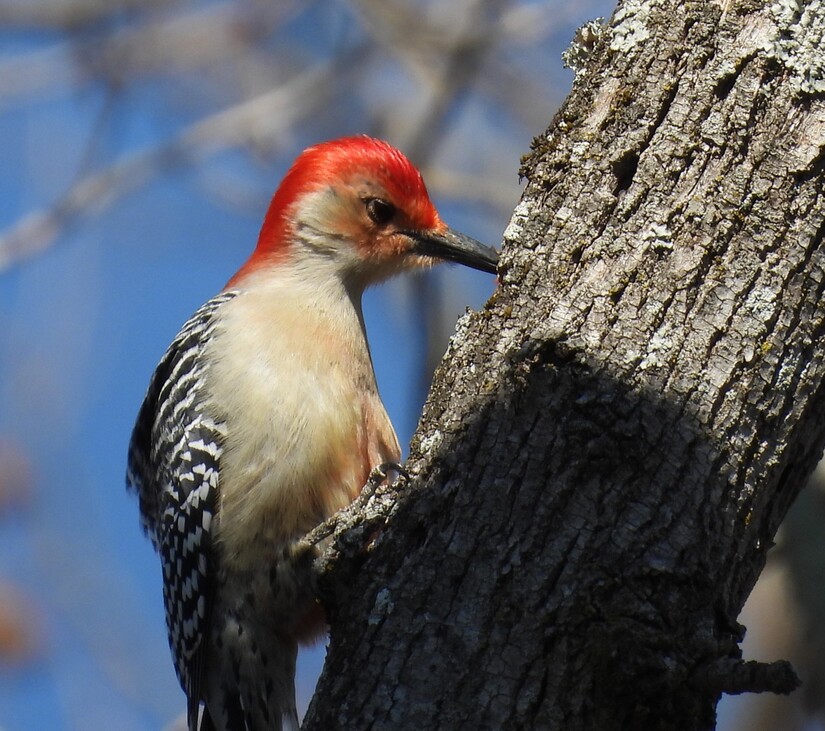
The northern flicker is a less-common visitor to backyard feeders but will stop by on occasion for a quick snack. When we see them in our yard, they are usually picking bugs and terrestrials out of the grass and not stealing seeds from the feeder. They have a different appearance from the more conventional-appearing woodpeckers. One distinct field mark of the northern flicker: when they fly away from you, they appear to have a white cotton tail. Flickers are difficult to describe in writing due to their complex coloration and feather pattern, but a picture is worth a thousand words:
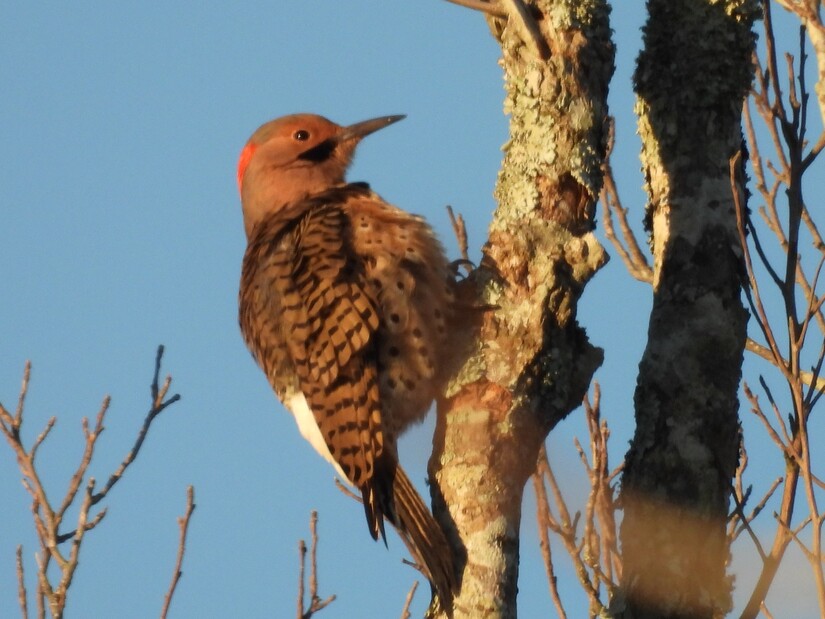
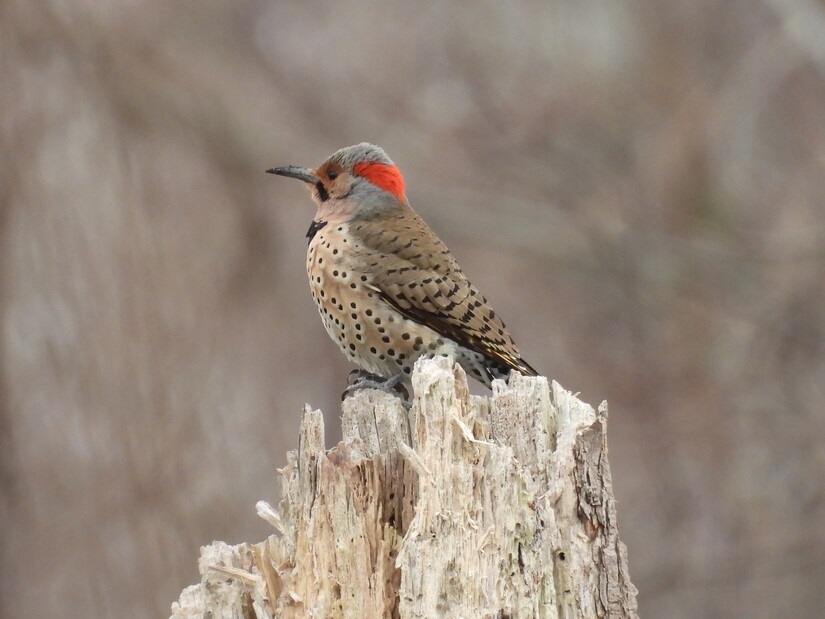
What’s so fun about woodpeckers is that, since so many are residential species and live at the same location year-round, they often become regular visitors to backyard feeders. And trying to differentiate between the various species is a fun birding puzzle.
* Mike Strzelecki is a freelance travel and outdoor writer, and 1981 graduate of Boyertown Area Senior High School. He writes from his house in Baltimore, Maryland. In his spare time, he joins his wife on adventures around the country observing and photographing birds.